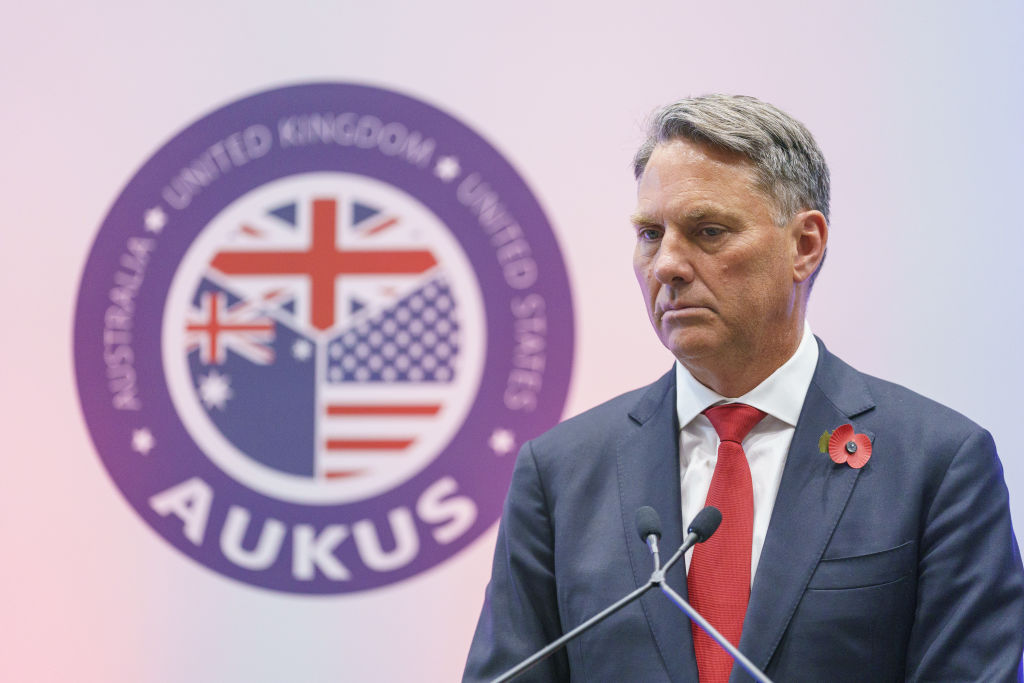
AUKUS Pillar 2 has a PR problem—and no, not just among sceptical regional partners.
Compared with evident progress on Australia’s future submarine capabilities under Pillar 1, analysts have often decried a lack of detail or engagement around Pillar 2, which is aimed at wider defence-technology cooperation. Despite efforts to spotlight trilateral innovation activities in the past 12 months, the absence of clear metrics for success, let alone a shiny new trilaterally developed capability carrying an AUKUS sticker, have led some to contend that Pillar 2 is falling short.
This has contributed to skewed assumptions about what constitutes success for Pillar 2. On closer inspection, Pillar 2 is actually making substantial progress, both in necessarily preparing the field for future cooperation by harmonising regulatory and policy settings and by maximising operational efficiency and interchangeability of advanced capabilities already in service.
The problem is that these activities have, until now, not been cast as key outputs or essential waypoints in the service of operationalising Pillar 2 projects.
Perceptions that Pillar 2 is falling short understandably frustrate those within the Australian strategic policy community seized by a sense of urgency. Compared with the long lead times for Pillar 1, officials and analysts alike have framed Pillar 2 as a means to accelerate the delivery of advanced capabilities to the military over a much shorter period, particularly within the next five years. But for many, this is contradicted by an apparent lack of ‘new’ material output in nearly two-and-a-half-years and a growing to–do list. Many members of the policy community have also bemoaned a lack of official information about Pillar 2’s innovation functionality objectives or the barriers to setting the enabling environment.
The perception that Pillar 2 would deliver trilaterally developed advanced capabilities on an accelerated timeline has led to inflated expectations about what it should, and could, achieve in the short term.
On one level, this may be attributed to the lack of information or insight from the AUKUS governments about what has been happening in the Pillar 2 space. Yet, since as far back as 2007, policy communities in all three countries have understood many of the challenges and barriers to defence industrial base integration and technology co-development.
In that context, the essential institutional reforms and regulatory harmonisation efforts that are now in train in Australia, Britain and the US should be considered legitimate outputs of Pillar 2, particularly in its infancy. If AUKUS represents a revolution in defence industrial and technology collaboration amongst allies, then Pillar 2 is as much about setting the conditions for more streamlined cooperation on advanced capabilities as it is about the specific capabilities themselves. Properly sequencing these activities is essential in order to avoid revisiting known problems every time a new trilateral innovation project is launched.
This is how the three governments appear to be conceptualising of Pillar 2: as a scalpel for dissecting institutional barriers to trilateral co-innovation. Hugh Jeffrey, Australia’s deputy secretary of defence for strategy, policy and industry, intimated as much during a recent CSIS event on Australia–US defence industrial cooperation. That this logic has now been stated publicly helps to recast reform efforts as a core mandate of Pillar 2, rather than simply a hinderance to its success or evidence of its stagnation.
In that respect, it’s possible to imagine an innovation lifecycle model for AUKUS Pillar 2 with three phases: reforming processes and sharing best practices, coordinating innovation and technology adoption, and near-seamless co-innovation.
The first phase is about harmonising export controls, progressing conversations about foreign disclosure, procurement policies, information-sharing and certification systems, but also limited innovation activities centred on data-sharing, capability demonstration, and building interoperability. This has included activities such as aligning common artificial-intelligence algorithms on P-8A maritime patrol aircraft to improve data processing for trilateral anti-submarine warfare activities.
The second phase focusses on coordinated innovation, whereby governments simultaneously conduct innovation challenges on an agreed theme but within their national contexts. An example is the AUKUS electronic warfare innovation challenge, announced in March 2024. Australia’s 2024 National Defence Strategy suggests that this phase may also include the trilateral adoption and delivery of novel technologies developed by any one of the partners.
Once these conditions are set, Pillar 2 could progress to a third phase and ideal end-state—genuine trilateral co-innovation and co-imagination.
This three-step model helps to situate the activities and progress publicly disclosed to date in a broader context. It is also one that resonates with experts well-versed in AUKUS Pillar 2 policy discussions in all three countries with whom we have recently engaged.
Given the long-standing barriers to technology cooperation between even the closest of allies, it’s unsurprising that initial Pillar 2 outputs have focused on reforms to the enabling environment and on maximising the operational efficiency and interoperability of priority capabilities. While co-innovation and co-production might be the gold-standard for AUKUS Pillar 2, progress in that area is not a realistic metric to measure success in the short-term.
To solve Pillar 2’s two-pronged PR problem—limited information and over-hyped expectations—the three partners should further clarify the logic and importance of this scalpel strategy and the sequencing of the innovation lifecycle. This will help to not only keep industry and innovation stakeholders engaged and supportive, but also balance expectations about what is possible within what timeframe.
Although Pillar 2’s end goal is more ambitious than what we have seen to date, it was always going to be a challenging first step to set the enabling environment for future success and to maximise possibilities for co-innovation within current limitations. Going forward, clearly communicating Pillar 2’s necessary sequencing to the right audiences on an appropriate timeline is critical, as is an appreciation by other AUKUS stakeholders of the complexities of the bigger picture.

